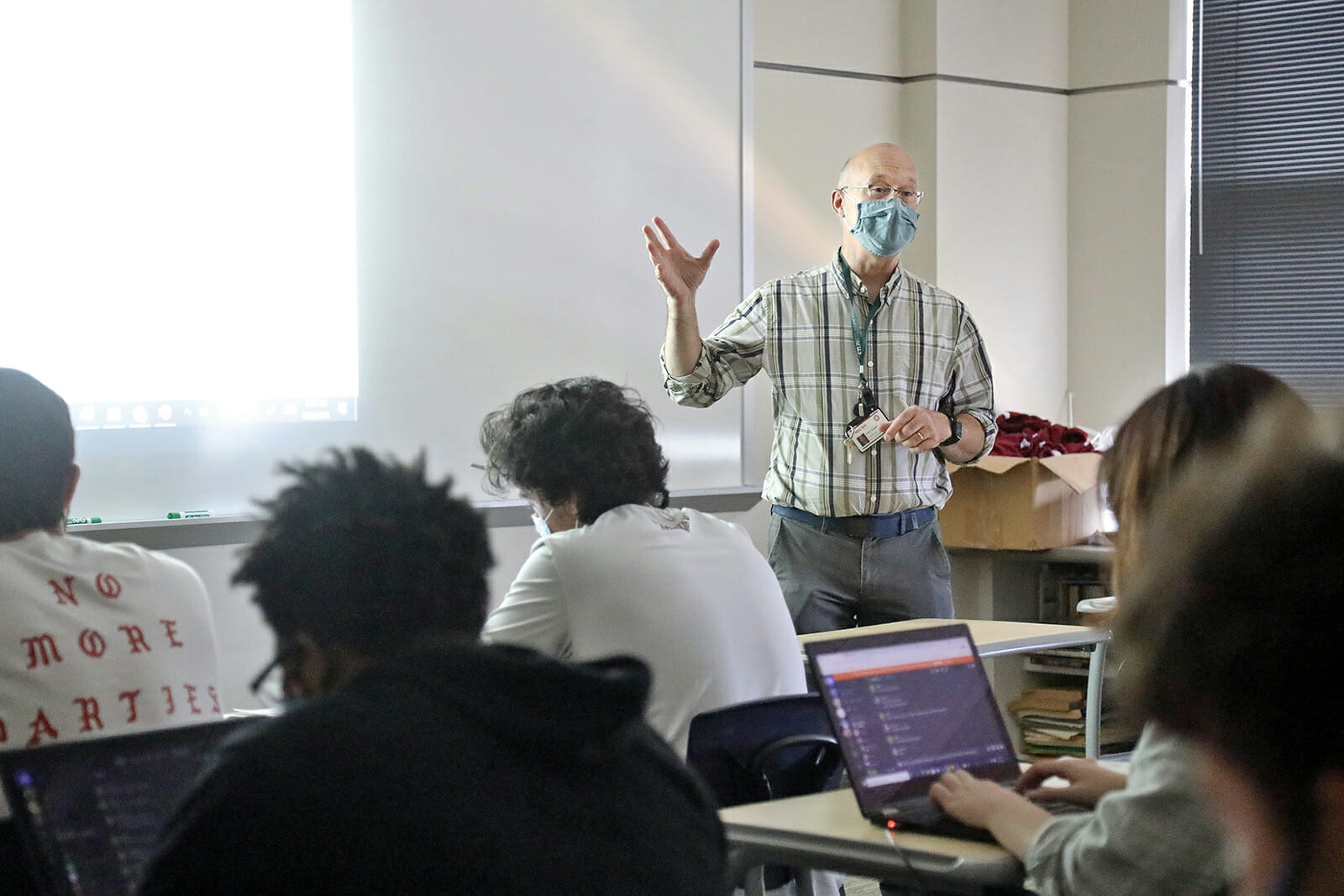Teaching Students How to Win at Social Media
 Recent changes to the daily calendar have allowed MICDS to step up its advisory programming, and we have been at work crafting an even more robust sequencing of opportunities to reflect on developing the Social and Emotional Skills it takes to fulfill the MICDS mission, developing the executive functioning skills to successfully navigate a rigorous academic program and becoming citizens of a world in which we are asked to embrace all people with compassion. #WinAtSocial is an important part of that programming in advisories starting this year—a gamified, interactive sequence of lessons designed to help students think critically about their use of technology and social media.
Recent changes to the daily calendar have allowed MICDS to step up its advisory programming, and we have been at work crafting an even more robust sequencing of opportunities to reflect on developing the Social and Emotional Skills it takes to fulfill the MICDS mission, developing the executive functioning skills to successfully navigate a rigorous academic program and becoming citizens of a world in which we are asked to embrace all people with compassion. #WinAtSocial is an important part of that programming in advisories starting this year—a gamified, interactive sequence of lessons designed to help students think critically about their use of technology and social media.
Every major technological advance seems to ride into town behind the twin horses of Promise and Threat. Life will be easier, we are told; we will be beautiful at last; we will have access to resources, knowledge and meaning heretofore unknown to our ancestors. “A world of profit and delight” will ensue. These are the Utopian promises of innovation.
Such promises are naturally disruptive to the status quo: jobs and familiar economies are threatened by new technologies, traditional literacies may be undermined. The way we socialize, communicate, and organize ourselves will be overthrown. Community will dissolve. These are the hoofbeats of fear, and such have been the promise and threat of new technology from the printing press to broadcast television, from the flying shuttle in eighteenth century weaving to fitting horseless carriages with an internal combustion engine in the early twentieth.
 In the dialogue called Phaedrus, the philosopher Socrates argued back in the fifth century BCE that writing itself as a technology would undermine our capacity for memory and give the appearance of wisdom to shallow knowledge, encouraging what he called “the conceit of wisdom.” Today, literacy, rightly or wrongly, is one of the most familiar proxies for intelligence and literacy rates are commonly cited as evidence for the success of an educational system.
In the dialogue called Phaedrus, the philosopher Socrates argued back in the fifth century BCE that writing itself as a technology would undermine our capacity for memory and give the appearance of wisdom to shallow knowledge, encouraging what he called “the conceit of wisdom.” Today, literacy, rightly or wrongly, is one of the most familiar proxies for intelligence and literacy rates are commonly cited as evidence for the success of an educational system.
Today, it is not uncommon at an educational conference to see presenters holding up a cell phone and declaring that since students have access to all of the world’s knowledge via this device, we no longer have to teach content. Content can be “googled.” It’s all about skills, we are often told. Today we see the inventors of Artificial Intelligence expressing serious reservations about their own advances as we face the prospect of stupefyingly fast intelligence operating without consciousness and already shaping our lives, apparently without conscience.
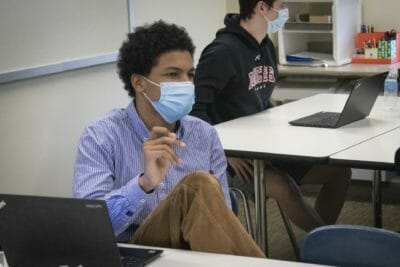 We experience the thrill of having the means of nearly instantaneous communication and self-expression at our literal fingertips, and regularly see the disastrous consequences of people’s ability to vent their emotions without filter. Whereas in the past, dull moments waiting in line for a concert or movie (or, sigh, the classroom!) might be given over to daydreaming or mind wandering—a notion that today seems as quaint as vinyl records and the family dinner—we now have access to endless entertainments, though the algorithmic attention economies that underlie the games we play, the reward systems of this world of infinite jest tap deep into the addiction centers of our brains. It is not uncommon to see folks at a concert or the theater still lost in their screen lives as the big show unfolds around them. Sometimes they are trying to “capture” the experience digitally to share with those who didn’t get tickets, all while the band plays on.
We experience the thrill of having the means of nearly instantaneous communication and self-expression at our literal fingertips, and regularly see the disastrous consequences of people’s ability to vent their emotions without filter. Whereas in the past, dull moments waiting in line for a concert or movie (or, sigh, the classroom!) might be given over to daydreaming or mind wandering—a notion that today seems as quaint as vinyl records and the family dinner—we now have access to endless entertainments, though the algorithmic attention economies that underlie the games we play, the reward systems of this world of infinite jest tap deep into the addiction centers of our brains. It is not uncommon to see folks at a concert or the theater still lost in their screen lives as the big show unfolds around them. Sometimes they are trying to “capture” the experience digitally to share with those who didn’t get tickets, all while the band plays on.
Today, we find that the very digital technologies that once promised to democratize knowledge can be exploited by nefarious forces bent on undermining democracy.
All of this is enough to give a lesser mind than Socrates’ pause to think about just where we are going as we wander on, staring into the glowing screens that increasingly stand between us and the world of direct experience.
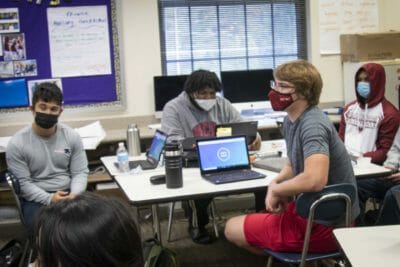 Socrates, also in Phaedrus, uses the metaphor of a chariot pulled by two horses as a model of the self or soul. In his use of this image, the intellect, the charioteer, holds the reins, while the horses of our divided temperament—one embodying noble aspiration, the other symbolizing the more ignoble urges or appetites that sometimes drive us—power the chariot onward. In our more “neuro-aware” age, we might see the charioteer as a stand-in for the Executive Functions of the brain, directing and modulating our emotional expression, perception, thought and action, trying to steer the chariot towards our ostensible goals in life. In place of the reins, we have the Gorilla glass screens and keyboards of our digital devices, and the questions still loom, where are we going with all this? How can I get where my noblest aspirations would take me? Is there an app for that? #WinAtSocial provides one avenue into that important conversation.
Socrates, also in Phaedrus, uses the metaphor of a chariot pulled by two horses as a model of the self or soul. In his use of this image, the intellect, the charioteer, holds the reins, while the horses of our divided temperament—one embodying noble aspiration, the other symbolizing the more ignoble urges or appetites that sometimes drive us—power the chariot onward. In our more “neuro-aware” age, we might see the charioteer as a stand-in for the Executive Functions of the brain, directing and modulating our emotional expression, perception, thought and action, trying to steer the chariot towards our ostensible goals in life. In place of the reins, we have the Gorilla glass screens and keyboards of our digital devices, and the questions still loom, where are we going with all this? How can I get where my noblest aspirations would take me? Is there an app for that? #WinAtSocial provides one avenue into that important conversation.
MICDS long ago signed on to join in the digital revolution. The opportunities and promise of digital technology put to educational purposes, the need to prepare our students to be technologically literate made for compelling arguments and helped distinguish this school from those that would be our peers. “Now more than ever” it behooves us to critically engage and reflect how we can best use and strategically employ all the power and promise of digital technologies to achieve our best self and better, more fully realize our most thoughtful goals as a school and as individuals.
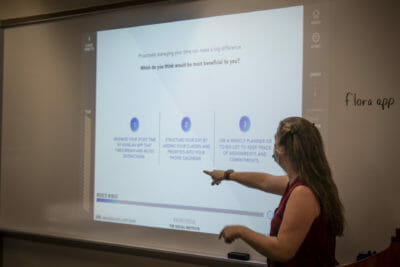 #WinAtSocial is a program that targets just this pivotal point in our digital lives and is presently part of the advisory curriculum in the Middle School for grades 7 and 8 and in 9th, 10th and 11th grade in the Upper School. The program is the brainchild of Laura Tierney, a four-time Duke All-American, who had previously worked in social media for businesses such as Disney, Nike, and Proctor & Gamble. Her organization, The Social Institute, is the design team behind #WinAtSocial, and their aim is to develop students’ critical capacities and strengthen their social and emotional skill set specifically around use of social media through presentations of data, involving students in debates and asking them to articulate their own values and how they align with their use of technology—to be mindful.
#WinAtSocial is a program that targets just this pivotal point in our digital lives and is presently part of the advisory curriculum in the Middle School for grades 7 and 8 and in 9th, 10th and 11th grade in the Upper School. The program is the brainchild of Laura Tierney, a four-time Duke All-American, who had previously worked in social media for businesses such as Disney, Nike, and Proctor & Gamble. Her organization, The Social Institute, is the design team behind #WinAtSocial, and their aim is to develop students’ critical capacities and strengthen their social and emotional skill set specifically around use of social media through presentations of data, involving students in debates and asking them to articulate their own values and how they align with their use of technology—to be mindful.
One of the attractions to the program for us as we first looked into it as a team of educators was its asset-based approach to social media literacies. Rather than take a “scared straight” tack in which adults present horror stories of social media disasters and examples of how it has ruined other people’s lives, #WinAtSocial presents a more balanced picture, encouraging students to think about issues such as online privacy and how they might use their online presence to uplift one another, and encouraging them to reflect on their core values and align their online behaviors with those same values. Some students can find this confusing initially—in part because they are used to being presented with the downside of social media almost exclusively, even as they register its attractions in the reward networks of their brains. Some lessons in #WinAtSocial actually show students how they might strategically use social media and online platforms to further realize and articulate those positive values in the world, how to use digital platforms to reach out to employers and mentors.
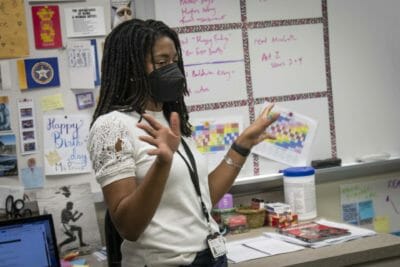 In this sense, to extend our chariot metaphor, #WinAtSocial steers clear of the technology as utopia or apocalypse narratives that alternately inspire awe and dread, and as an alternative invites students to be their own driver and to use these resources to realize their highest aspirations.
In this sense, to extend our chariot metaphor, #WinAtSocial steers clear of the technology as utopia or apocalypse narratives that alternately inspire awe and dread, and as an alternative invites students to be their own driver and to use these resources to realize their highest aspirations.
These conversations touch on character development, diversity, equity, and inclusion. There are seven core themes covered with different age-appropriate lessons at each grade level:
- “Play to your Core,” which invites students to reflect on their own values, character, and interests.
- “Protect your Privacy Like You’re Famous,” which points students towards the tools that can help them stay more in control of their personal information.
- “Strike a Balance,” which encourages students to balance the time and attention given to screens and tech with the people around them.
- “Cyberback” is all about using social media to support one’s peers.
- “Find Your Influences” activities cover both interrogating the credibility of our influencers, looking under the hood at the drivers of online influence, and taking the time to surround oneself with positive role models.
- “Use Your Mic for Good” addresses how social media might be a positive tool for creating meaningful change.
- “Handle The Pressure” which addresses how students can find their own path no matter the pressure from those around them.
In 2019, Common Sense Media released The Common Sense Census: Media Use by Tweens and Teens, based on a survey of more than 1600 children in the U.S., and their work revealed that “On average, 8- to 12-year-olds in this country use just under five hours’ worth of entertainment screen media per day (4:44), and teens use an average of just under seven and a half hours’ worth (7:22)—not including time spent using screens for school or homework.” Anecdotal evidence during the pandemic would suggest these numbers have not dropped in the intervening months. Anything one devotes a third of one’s day to deserves some critical thinking.
Neural plasticity refers to the many ways our brains are shaped by our experience, particularly by repeated experience. What we do repeatedly, we get better at or become habituated to, because the neural networks and the pathways through the brain that support these activities are reinforced. For example, we get better at playing a piece on the piano through practice because those neural networks get stronger and more efficient through repeated behaviors. The brain is stimulated to reinforce or build new neural connections, and then eventually insulates (or prunes away) these neural networks until the electro-chemical signal flows more efficiently. What starts out as haltingly plunking at keys becomes automatic, fluent, and fluid: a song!
The famous “ten-thousand hour” rule is another way of speaking about this process: apparently it takes ten thousand hours of practice in a field before one can hope to achieve expertise (thanks to the reinforcing of neural pathways due to repeated practice.) The law of plasticity applies to desirable goals, such as becoming a skilled musician or writer, as well as bad habits, by the way. That which we do habitually becomes more and more automatic. One necessary proviso of the ten-thousand-hour rule is that it is not so much that practice makes perfect, but perfect practice makes perfect. Ten thousand hours practicing a bad golf swing will simply reinforce one’s improper technique. We can get really good at being bad (so get a coach!)
 As the Census mentioned above suggests, our youth, on the whole, spend a lot of time reinforcing the neural pathways involved in consuming digital media, including social media. Consequently, during the pandemic, while we longed for a return to the companionship and social connection of in-person schooling, many of the screen-based habits we developed as a form of self-soothing during stressful moments—distracting ourselves with a computer game to trigger the brain’s reward system, for instance—have been reinforced over the past several months. In stressful situations subsequently, these are likely to be more “automatic habits” that we fall mindlessly back into, leading us to stare into our screens in unproductive pursuits that do not necessarily help us realize our highest potential. Even though we know we once longed to be together again in person, we may get lost, side-by-side, staring into a screen.
As the Census mentioned above suggests, our youth, on the whole, spend a lot of time reinforcing the neural pathways involved in consuming digital media, including social media. Consequently, during the pandemic, while we longed for a return to the companionship and social connection of in-person schooling, many of the screen-based habits we developed as a form of self-soothing during stressful moments—distracting ourselves with a computer game to trigger the brain’s reward system, for instance—have been reinforced over the past several months. In stressful situations subsequently, these are likely to be more “automatic habits” that we fall mindlessly back into, leading us to stare into our screens in unproductive pursuits that do not necessarily help us realize our highest potential. Even though we know we once longed to be together again in person, we may get lost, side-by-side, staring into a screen.
A similar process can be seen in some of the unhealthy dietary habits we have indulged in during trying times. Changing directions and starting over can feel like some of the hardest things in life, because our brain’s reward networks have been so well developed to pursue these pleasures through repeated coping during difficult times.
If one begins consuming amusing cat videos as a freshman at the average rate indicated in this study, one will achieve “expert status” in the consumption of cat videos by Spring Break of his or her senior year.
The #WinAtSocial program provides a moment to pause during the school day and ask some critical questions and, we hope, engage our students in critical reflection and provoke their brains’ executive networks to think about how to best steer through these important digital tools, to use them rather than be used by them, to be their own digital drivers.
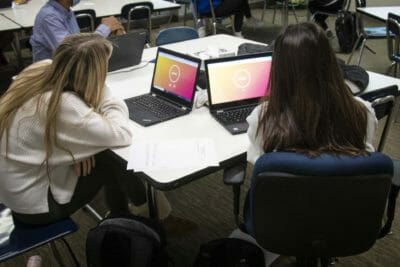 Of course, the data on screen time and what we know of plasticity suggest this can be an uphill journey. We have much more time to indulge in unproductive habits than we may be spending on reflection and in developing positive, productive habits. #WinAtSocial moments are just one sequence of opportunities to pause and consider our use of social media and all of its ramifications throughout the year. This is a chance to exercise the critical thinking we champion in our school’s mission statement, critical thinking around how we spend two of our most crucial resources: our time and our attention, and how we can best and more consistently express our best selves.
Of course, the data on screen time and what we know of plasticity suggest this can be an uphill journey. We have much more time to indulge in unproductive habits than we may be spending on reflection and in developing positive, productive habits. #WinAtSocial moments are just one sequence of opportunities to pause and consider our use of social media and all of its ramifications throughout the year. This is a chance to exercise the critical thinking we champion in our school’s mission statement, critical thinking around how we spend two of our most crucial resources: our time and our attention, and how we can best and more consistently express our best selves.
In the expectation that some families will want to continue these conversations and reinforce such critical reflection (and the neural networks that support these crucial executive networks in the brain), MICDS provides summaries and resources for the current #WinAtSocial advisory discussions in the Upper School Announcements in Weekly News each Friday. For those who are curious and want to pursue the subject further, #WinAtSocial also provides MICDS families with a Parent Toolkit with insights into a variety of apps and online platforms their students may be using.
We are happy to partner with The Social Institute and with MICDS families in sustaining these important conversations.
